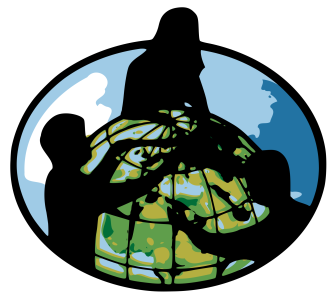For the past two weeks, I have seen more pine trees than people.
That sounds like an understatement, I’m sure, but I really do think it might be the truth. For the past two weeks, I’ve spent the summer at Carroll College in Helena, Mont., on a fellowship through the National Endowment for the Humanities. The seminar, Re-Enchanting Nature (which I highly recommend) features not only awesome programs but affords me the opportunity to spend much of my summer outdoors, running trails and sitting quietly in nature.
And, to the best of my ability, I’ve tried to take advantage of that. I’ve spent mornings quietly bobbing through Mt. Helena’s beautiful mountain trails, hearing dirt beneath my feet, feeling my lungs stretch as they try to adjust to thinner air, seeing blankets of green cascade down sloping mountainsides.
And it’s beautiful.
And in the heart of it all, I can’t help but wonder who gets actual access to this.
Don’t get me wrong—the beauty of nature, especially in Downtown Helena, is that it is generally free and open to the public. This means that it, theoretically, nature should be a space that is equal access for all.
Still, we know that in reality, this is far from the truth. Whether it’s spatial, transportive, or merely in representation, my time here has reminded me that, often, nature isn’t portrayed as a space for people of color. As Ambreen Tariq of instagram’s @brownpeoplecamping:
Our steps are assertions about the importance of our access to and relationship with wilderness. So why aren’t we doing more to introduce new and diverse feet to the trails? As our country grows more diverse, we face an imperative to include people of color in the narrative of blazing and keeping ablaze our trails. If the faces of our hikers and campers don’t reflect the faces of our increasingly diversifying American population, our public lands, parks, and trails will surely suffer.
I didn’t go up in a particularly nature-based world, and the time spent now in Helena, Montana, has shown me what a rich experience it is to spend time among the trees and listening to the wind whistling through pines. Still, it is a privilege to be able to not just get access to natural space, but to have the time to sit and reflect on one’s place in that space. As another teacher in my seminar put it, “How do we get kids to care about [nature] when [they’re] just worried about getting home okay?”
And, this, of course, is the crux of the matter. Because when we isolate kids from opportunities to experience the land, we essentially leave them in a space of disconnect from nature and the environment. We don’t allow them to expand their viewpoints, but give them access only to the houses, buildings, and streets they see every day.
I don’t mean to say that kids can’t have meaningful connections in urban spaces. Being connected to “place” does not have to mean “nature,” but it is inherently different to understand our place in the modern world than in the natural. As we are in a world that increasingly needs to understand things like climate change and environmentalism, denying kids the access to nature means denying them of a lifelong ability to create what Wendell Berry called “affection” for nature (in an imperfect, but interesting speech). We deny communities the ability to understand what it means to be connected not just to a space but to the earth itself. We leave them, in a sense, floating, unable to have another perspective of the vast American landscape with which they are connected.
And our kids deserve to understand that feeling, feel that sense of awe and hope and the vastness and beauty of the outside world, and gain perspective on their place in it. They deserve the space to sit and contemplate—not just on life itself, but on future and the past, perhaps facilitated by the shadows from long pines and the whistling through evergreen trees.

Photo courtesy of the author.


